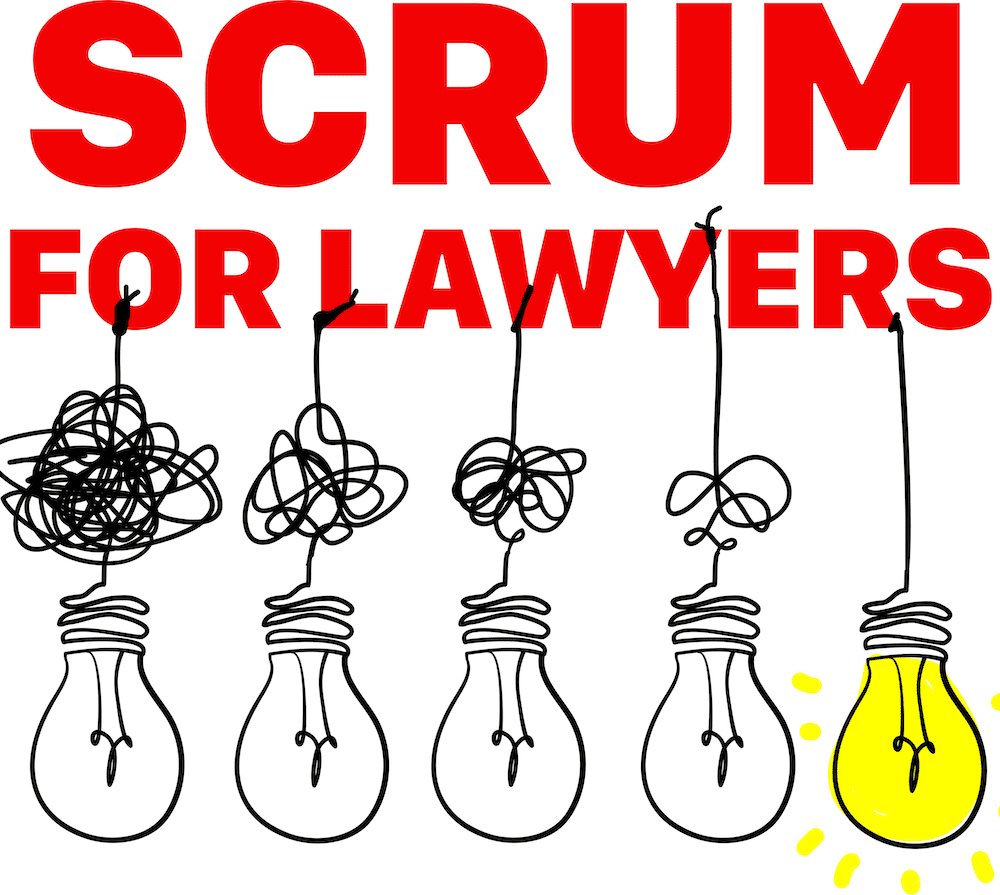A few weeks ago, I listened to Scrum: The Art of Doing Twice the Work in Half the Time. I practice exclusively criminal defense. Some of my practice is “project based” but much of the pace is controlled by the court or other factors. I found the Scrum approach to be fascinating, but I did not see how I might incorporate it into work as a criminal lawyer. Then we had a hard trial date scheduled for a federal drug conspiracy case. Our first trial since the pandemic began. Seemed like a great time to implement some of the techniques discussed in Scrum: The Art of Doing Twice the Work in Half the Time. I will forever use the parts of Scrum that I adopted in preparing for this trial.
About the Book

Scrum was created by author Jeff Sutherland with Ken Schwaber in 1993. It is an alternative the typical top-down project management approach. The method has been implemented in tech companies (including Google, Amazon and Facebook) to create software and products. The book talks about its use in non-tech industries such as education and community development projects.
It would not be accurate to say that I adopted the Scrum framework, because the heart of Scrum is the scientific method of empiricism. However, I used several of the ideas and techniques discussed in the book. The most interesting and useful was the “Scrum Board.”
Our Use of Some Scrum Techniques
Our case had a giant cast of characters and discovery being dumped on us from a variety of sources. We had investigations to conduct. We had legal issues to research and brief. It was like drinking from a fire hydrant. The list of “To Do” items went on and on. Where to start? How to organize? How to budget time?
Workshop the Trial Theme, Theory, and Story
The book talks about a “user story” for software. Developing this gives a high-level idea of purpose and direction. This translates well to criminal defense trial preparation. Unlike preparing for a trial for the prosecution, a criminal defense attorney must reveal the true story from a largely uncut stone. Volumes can be written about developing story for trial. Gerry Spence has penned some useful tools in this regard. We use our method for developing the story the jury needed to hear.
Case Block Backlog
Once we had a clear map of where we were going, we had to determine the steps to get there. In most Scrum resources this is referred to as the “Product Backlog.” Obviously, in preparation for a federal criminal trial, an attorney is not creating a “product” in the traditional sense. We are building “a case.” We called the “Product Backlog” the “Case Block Backlog.”
Enters the Scrum Board for Lawyers. I used a blank wall in my new office (“the Lab”). The left column was labeled simply, “TO DO.” The center column was labeled, “IN PROGRESS.” And the far-right column was labeled, “COMLETE.” Within the center column (In Progress), we divided into the different team members, so we could all see what each other was working on. We used an unallocated space in the center for joint tasks.
We spent most of a day working through the discovery, previous pleading, and our notes to identify the Case Blocks needed to build the best case. Each Case Block was broken into manageable tasks – nothing that would take more than one day. Each of these jobs were written on a Post-It Note and placed in the “TO DO” column of the Scrum Board. On each note, we also rated the task by how much work we thought the task required.
Scrum: The Art of Doing Twice the Work in Half the Time recommends rating tasks using “story points” based on a Fibonacci-like scale (1, 2, 3, 5, 8, 13, 20, 40, 100). That is way over my head. I used animals to rate our tasks.
Cat < Dog < Pig < Horse
Once our “To Do” column was full on the Scrum Board we started the Sprint.
The Sprint
The Scrum sprint is a fixed time period of 1-4 weeks. Within this time, a Scrum team works on each development cycle of the project. We basically had two sprints in trial preparation. The breakdown of the “development cycles” was probably a bit more haphazard than you might see in most software companies. Regardless, the use of the “Sprint” to focus and motivate was a huge help.
After the Sprint is completed, the Scrum team holds a sprint retrospective meeting to review the teams work and deliverables. The team identifies what processes worked and what didn’t in the Sprint. Then set up and run the next Sprint.
Scrum and Scrum Again
For my next trial, I will attempt to employ more of the Scrum techniques and philosophy. In federal criminal defense, you often have a high volume of discovery and your execution at trial must be precise. If you know that preparing for trial often leaves you wondering, “Where do I begin?” or “How am I going to get it all done?”, then I recommend you take the six hours to listen to Scrum: The Art of Doing Twice the Work in Half the Time. At a minimum, it will give a few tools to help you put some structure to your trial prep. But also, it might just be the passkey for unlocking your best performance in trial.


